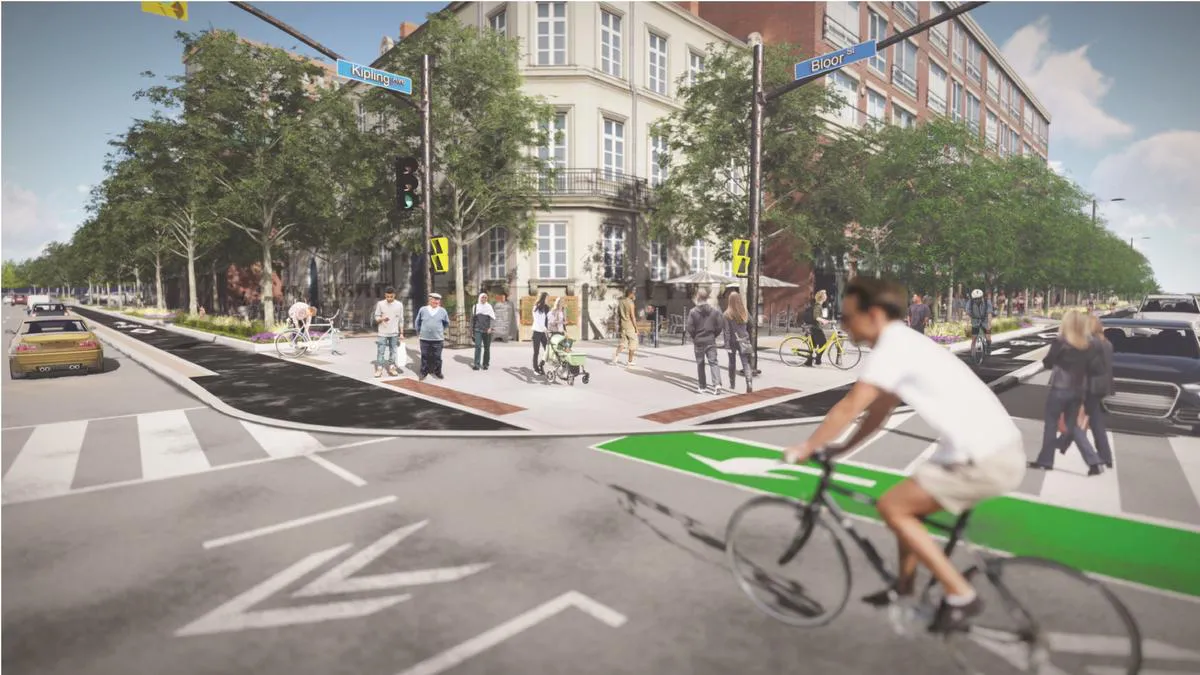
As a city planner, I have three aspirations for Toronto in 2051 — to be the world’s most inclusive city, resilient in the face of global events and climate change, and prosperous through equity and economic competitiveness.
These aspirations are ambitious, but they reflect the values of most Torontonians. To achieve these goals, we need to make the most of diversity, innovation, and urban geography.
All areas of the city have a role to play. Our employment areas can attract new businesses and technologies. Our growth centres and main streets can become denser and busier, mixing housing and commerce. And our lowrise neighbourhoods can house tens of thousands more people, connected by improved transit and local mobility, sustained by great design that celebrates public space.
Prosperity and population growth fuel each other. More than 700,000 people have found homes in Toronto in the last 30 years with another 700,000 expected by 2051. How we welcome newcomers will be the measure of our success. Where will they find homes? What housing opportunities will attract entrepreneurs and innovators? How will new Torontonians participate in and embrace an inclusive, resilient and prosperous city?
For decades, the idea of Toronto as a city of neighbourhoods formed part of our success story, For some, this means guarding the stability and character of lowrise neighbourhoods. These neighbourhoods collectively make up 35 per cent of the city. In many, including inner suburban neighbourhoods developed after the Second World War, existing planning rules only allow detached houses.
Toronto’s next chapter must be built around inclusion and will require the vision for low-scale neighbourhoods to shift. To be competitive, Toronto must continue to attract diverse talent, and provide a full spectrum of housing, including affordable homes. City reports found that in addition to condominiums and apartment buildings, Toronto needs to produce at least 42,000 new ground-related homes by 2051. That is more than 1,200 new houses, townhouses, and lowrise apartments every year.
We can welcome new residents in our neighbourhoods without sacrificing the lowrise character that makes them sought after places to live. That is one reason why the city’s planning department put forward a proposal for discussion to permit multiplex dwellings in neighbourhoods across Toronto.
Multiplex dwellings are small-scale buildings that include more than one unit — duplexes, triplexes, and fourplexes. Planning permissions for multiplexes, along with garden suites, will add to the range of lowrise housing opportunities.
A vision for Toronto’s neighbourhoods must add new layers of amenity, housing choice, and mobility. It is not the end of the detached house, backyard, or car. Toronto’s neighbourhoods will evolve to include different lowrise housing types, meeting the needs of households, large and small, representing different family and economic statuses, ages and cultures. Neighbourhoods will be walkable and livable and will continue to provide green space and tree canopy that support adaptation to climate change.
This vision is not new. It is a tried and true model of urban life, evident in pre-war urban development relying on transit access, walkability, and mixes of land use and buildings that provide easy access to opportunities, services, and amenities.
Toronto’s Official Plan is a growth strategy for large scale change, where dense mixed-use communities emerge around a growing transit network. Sixty per cent of planned development will be in our suburbs. Six Points in Etobicoke, Downsview in North York, and the Golden Mile in Scarborough — these new precincts show how the future city is already emerging in meaningful ways.
Expanding housing options in neighbourhoods is the missing piece of the growth puzzle. Neighbourhoods that first developed as postwar automobile-oriented suburbs can gently evolve with additional homes in a lowrise form.
Inclusive. Resilient. Prosperous. Toronto can only achieve this future if our neighbourhoods also grow and reflect these aspirations. If the goal is to be the world’s model for successful urban growth by the mid-21st century, then the best place to start is at home.